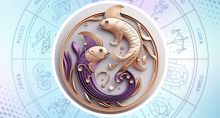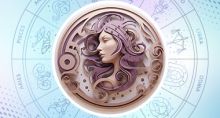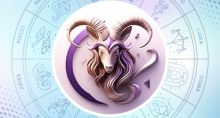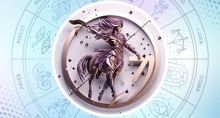10 Hindu Gods and Their Favorite Flowers
Most Hindus know Tulsi is dear to Lord Vishnu, while the lotus is Goddess Lakshmi’s favorite flower. Just as the days of the week are associated with different deities, different flowers are also associated with them. In Hinduism, flowers are often linked to spirituality and devotion. So, they are very integral to the worship of Hindu Gods and Goddesses. People use these flowers to please the deities. In fact, Poojas and other rituals are considered incomplete without these flower offerings.
In this article, we shall see which flowers are the favorites of Hindu gods and goddesses.
1. Goddess Lakshmi
The consort of Lord Vishnu, Goddess Lakshmi blesses us with wealth, good fortune, and abundance. In popular iconography, the Goddess sits on a fully bloomed Lotus, which is also her favorite flower. People offer her Lotus flowers during Poojas for this reason. They also offer white flowers like Tuberose and Mogra (which are fragrant) and white Chrysanthemum (non-fragrant) to the Goddess.
2. Lord Ganesha
Ganesha, the son of Shiva and Parvati, is worshipped for the removal of obstacles in life. Like Goddess Lakshmi, he has a fondness for red flowers. Red Marigold/Genda are among his favorites. The Marigold flower is unique, as it is the only flower offering that one can distribute with its petals. With the exception of all the flowers that come under ‘Tulsidal,' you can offer all others to Ganesha. However, it is the red Hibiscus that most people choose as an offering to the elephant-headed deity.
3. Goddess Saraswati
The consort of Lord Brahma, Saraswati, is the Goddess of knowledge and the arts. She wears white clothes, which symbolize a pure mind and soul. However, her favorite color is yellow. While doing Pooja for Saraswati, you can offer flowers of the Indian Magnolia plant (Champa) or Flame of the Forest (Yellow Palash), as these are very auspicious. You can also offer yellow Roses, Sunflowers, Allamanda, etc.
4. Lord Shiva
Shiva is the Destroyer Archetype and the Supreme God. Unlike other deities, Shiva seems to prefer ordinary flowers that are not known for their beauty. His favorite flowers are Datura, Dry lotus, Nerium Oleander flower (Kaner flower), Kusum, Aak, Kush, etc. One can always spot Bel trees (Aegle marmelos) outside Shiva temples, as well as white Champa (Plumeria) trees. One can also see climbers like Juhi and other Jasmine plants on these trees, which have fragrant flowers.
5. Goddess Kali
Goddess Kali is the Divine Mother and Adishakti, who symbolizes feminine power. Devotees worship her with blood-red Hibiscus flowers, as they are her favorite flowers. These, as well as red Marigold flowers, go well with her ferocious appearance. Kali wears a garland of skulls (belonging to the countless Asuras she slayed), blood drips from her mouth, and her tongue lolls out. Dark red Roses, Crimson Glory, and Aboli are some of the other floral offerings to Goddess Kali.
6. Lord Vishnu
Vishnu is the Preserver Archetype in Hinduism. He is the consort of Goddess Lakshmi. Some of the favorite flowers of Vishnu are Lotus, Maulsari, Juhi, Chameli, Ashoka, Malti, Vasanti, Kadam, Kewra, Champa, and Vaijayanti. Basil (Tulsi) leaves are also very dear to him, and devotees often include them among the flowers they offer to the deity.
7. Lord Hanuman
Hanuman, the monkey god, is a popular deity. He was a great devotee of Rama, an avatar of Vishnu. People offer the leaves and beautiful flowers of Ruee or Madar (Calotropis gigantea and C. procera) to Hanuman on Saturday. These common shrubs grow in profusion near villages and farmsteads. Another flower that is dear to Hanuman is Chameli. So, people offer Chameli oil during Hanuman Pooja. Jasmine is loved by Lord Hanuman, and according to the ritual, five Chameli or Jasmine flowers should be offered to please Hanuman. Offering Jasmine oil along with sindoor or vermilion to Hanuman also helps ward off evils from your life.
8. Goddess Durga
Arali or Nerium Oleander is the favorite flower of Goddess Durga. It comes in many colors like red, white, and pink. This flower has great importance in Tantrik worship. Even its scrubs are important for goddess worship. Supposedly, those who follow Tantrik practices have to offer worship and complete Mantra Jaap in the proximity of a red Oleander tree.
9. Lord Krishna
As a young boy, Krishna would spend many hours in the Kadamba (Neolamarckia cadamba) forest. The flowers of the Kadamba tree are round and very fragrant. Parijat (Nyctanthes arbortristis) is another tree associated with the deity. The divine tree emerged from the Milky Ocean when it was churned by the gods and the demons. Indra was given custody of the tree. When Satyabhama, the wife of Krishna, saw it in Indra’s garden, she coveted it and told Krishna that she desired to possess it. Krishna then brought the tree to earth. When Satyabhama and Rukmini (another wife of Krishna) fought over the tree, Krishna found a solution by planting the tree in Satyabhama's courtyard. But its flowers would fall only in Rukmini's courtyard.
10. Surya
Surya, the Sun God, is an important deity in Hinduism. His favorite flowers are the red Lotus and red Hibiscus. Surya gives life to all things in the universe. The vibrant colors of these flowers evoke the deity’s energy and power.




















